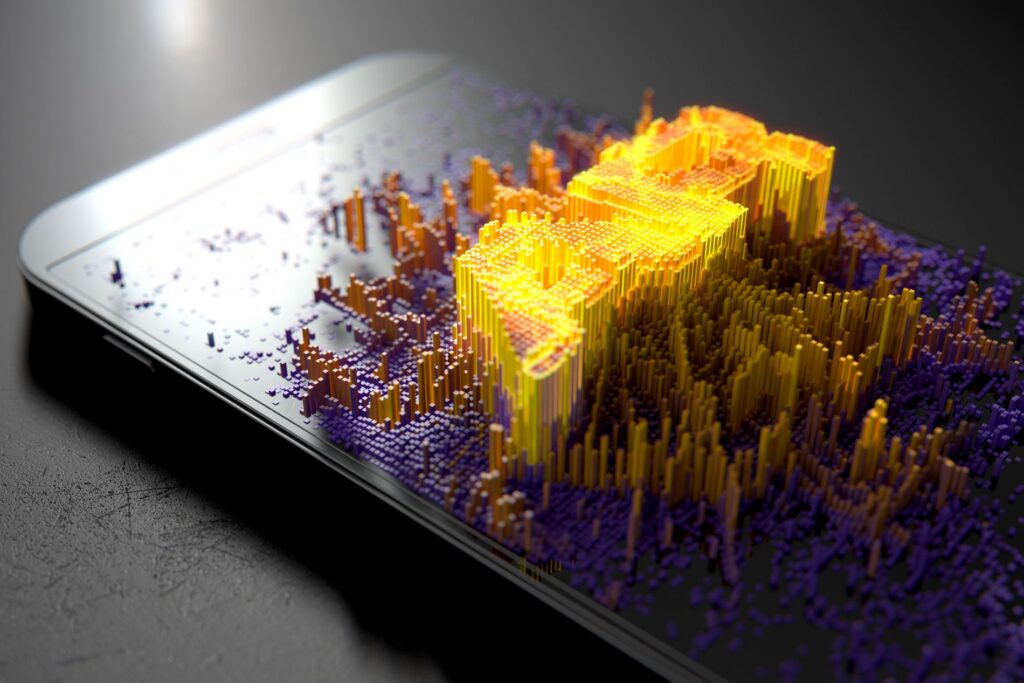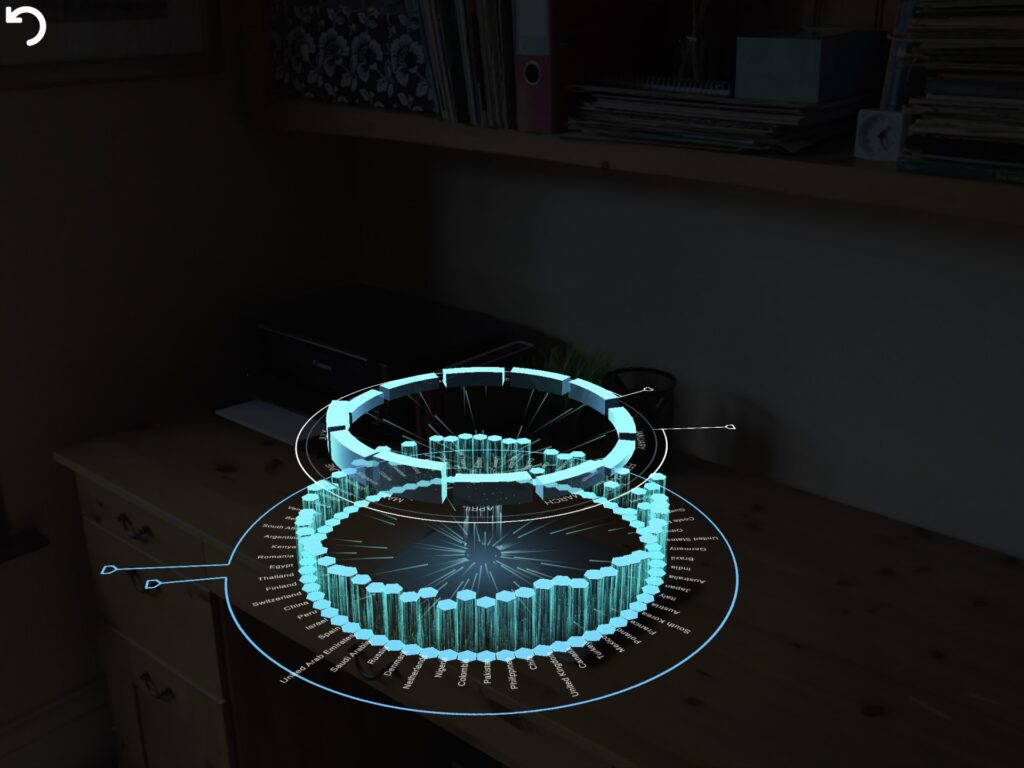
The need for clearer data communication could result in virtual and augmented reality finally coming to the enterprise fore. Digital Bulletin speaks with Simon Wright, Head of VR and AR at Genesys, to learn more about ‘hyper-visualisation’ and the company’s explorations in this field
It sounds mesmerising and transformative. A virtual reality (VR) environment where the user can literally walk through data, with information presented via interconnected ‘planets’ and 3D heat maps inside a ‘data universe’. Forget spreadsheets and graphs; this was data visualisation reimagined using one of the 21st century’s most exciting technologies.
The concept was created by Genesys, the billion-dollar customer experience firm, as it explored ways for clients to benefit from the vast amount of data generated by its contact centre solutions. A working prototype designed for a customer in the telecoms industry, the VR-based visualisation tool wowed onlookers at a Genesys customer event.
But not long after, another reality hit home for the California-based company: VR adoption rates were just too low. Cost and usability have historically been two of the main buffers to VR take-up; equipment and content are very expensive to acquire, while employees – in Genesys’ case, call centre operators – weren’t enamoured by the idea of wearing cumberhome headsets as they went about their work.
For Simon Wright however, Head of VR and AR (augmented reality), this is a battle that’s far from lost. Given the freedom by Genesys to continually push the limits of these technologies, Wright firmly believes they hold the key to business communication around data – and that wider adoption will finally begin to accelerate.
The often-stunted relationship between VR, AR and the enterprise world is a surprise to many observers. After all, this is technology that can trace its beginnings back to the 1800s and the very earliest days of photography. ‘Virtual reality’ was a moniker first used in the 1980s and since the turn of the century, VR and AR have been mainstream terms in the digital sphere.
Yet over recent years, VR’s adoption rate hasn’t matched previous anticipation around its business potential. Statistics are there to back up this claim; study Google search trends and you will see a sharp spike in VR-related activity in 2016, with an equally rapid decline in the years since. Sales-wise, 8.9 million headsets were shipped in 2018, up only 600,000 from 2017.
"If companies can help people identify patterns and correlations and make better decisions because of having amazing visualisations to work with, then I think that is the business case" - SIMON WRIGHT
On top of concerns over price and user experience, VR has also suffered from a narrow range of enterprise use cases. Employee training has been one of the few areas where it has gained traction and it was this deployment that formed the basis of Genesys’ first experiments with VR, as Wright explains.
“This was around five years ago, so it really was Oculus [VR company acquired by Facebook] version one,” he tells Digital Bulletin. “Could we use VR to skill up and train agents and customer service staff, and help them visualise problems? It was also about problem-solving and UI [user interfaces], like the systems in a contact centre.
“We had some challenges with the early prototypes, one of which was motion sickness. There was a massive usability question mark, so although the tech was cool, the question which we were asking ourselves was: would people really want to wear these for 20-30 minutes in a busy contact centre? Other challenges we had were cost and time required to design and make the content.”
Wright’s data visualisation prototype stuck with him, however, and it was in this example that he saw the highest potential. But to make use cases easier to imagine, Genesys felt it needed to switch its focus from VR to AR. The key difference was the accessibility of AR capabilities through smart devices, removing the need for any additional hardware.
Genesys’ recent strategy has been to plough on with its work in AR and this approach looks like it could soon reap benefits. 2019 appears to be signalling a growth surge for AR, with the global market expected to register a CAGR of 151.93% over the forecast period up to 2024. Advancements in cloud and AI (artificial intelligence) technologies are behind these projections.
“Our focus has been on AR and we’ve had quite a lot of success,” says Wright. “We’ve been looking at it from two sides; from customer experience and how we use AR to enhance the customer experience in ways we couldn’t do before, mainly using visualisation and animation to bring objects to life. The other area is data visualisation, or hyper-visualisation as we call it.”
Data is today’s enterprise currency; it offers businesses unprecedented opportunities to shape strategy and illuminate decision-making. Yet realising these ambitions doesn’t come without its challenges.
With data flowing from multiple sources, companies require both the technology and skills to turn this stream of information to their advantage. Overcome that hurdle and there still lies the problem of effectively communicating those outcomes to a wider audience. From this challenge has emerged the discipline of data visualisation.

This is where Wright and Genesys introduce AR into the equation. They have termed data visualisation supported by AR as ‘hyper-visualisation’ – and Wright believes it has a future in the world of data reporting and analytics.
“What we’ve seen already from our experimentation with AR is that it really works as a medium to help simplify and visualise massive amounts of data. Our brains are wired to react to what we see, much better than what we hear or read,” he explains.
Hyper-visualisation involves creating a 3D model where each datapoint is given a mass, with the moving data then captured in a video before being deployed in an AR interface. Users are able to view this interactive data display through their mobile phones or another AR-enabled device like smart glasses.
“You can essentially point your tablet or your phone at your desk, and bring a 3D data visualisation to life on the desk in front of you,” Wright continues. “You can spin it around and interact with it, enlarge it, pinch and zoom, all that kind of thing – and of course walk around it. We’re now deciding how we can use further use AR in the world of reporting and analytics because it certainly has a place, there’s no doubt about it.”
Will such solutions come a cropper in the face of familiar issues around cost and viability? Wright is adamant the business case is there.
“If companies can help people identify patterns and correlations and make better decisions because of the have amazing visualisations to work with, then I think that is the business case,” he says.
“It’s potentially going to open the door to a whole new breed of analysts too. In the future, we might have people who are specifically trained on AR visualisations. These are the people who, right now, are using Snapchat and Facebook-type AR and are completely comfortable with it.
“The business case does depend a lot on the devices, however; we need affordable AR devices that will allow anybody to not have to use their hands to hold their object, but to use their fingers to interact with the UI in front of their face. Once we’re there, it will allow anybody to walk around the room and see objects in a way they just can’t do at the moment.”
Data visualisation could be the use case that elevates AR to new levels of adoption across the enterprise. Certain verticals are already tapping into the possibilities of this technology in different ways, however, with “huge potential” opportunities in the fields of biotechnology and healthcare according to ResearchandMarkets.com.
Other sectors familiar with AR include manufacturing, engineering and architecture, but Wright believes a factor crucial to future application will be talent. He insists the next generation of workers will benefit from the experience of VR and AR usage in their everyday lives – and Genesys is already making efforts to extract ideas from this generation of ‘future customers’.
“With the best will in the world, any company, even with thousands of developers, is never going to think of everything all on its own. You need the fresh, young, slightly crazy ideas – but that’s fine,” he concludes. “We’ve recently started a programme where we’re working with some young, bright minds in the UK and soon elsewhere in the world, to foster and encourage them to innovate and develop around our solutions, which includes AR and VR.
“We’ve already seen them come up with some amazing ideas for retail, for example. Whether they’ll go into production I don’t know, but it forces you to think about things differently and see it from their point of view. They live in a world of filters and face masks; these are all the AR things coming out now. These people are important, they are the customers of the future.”



